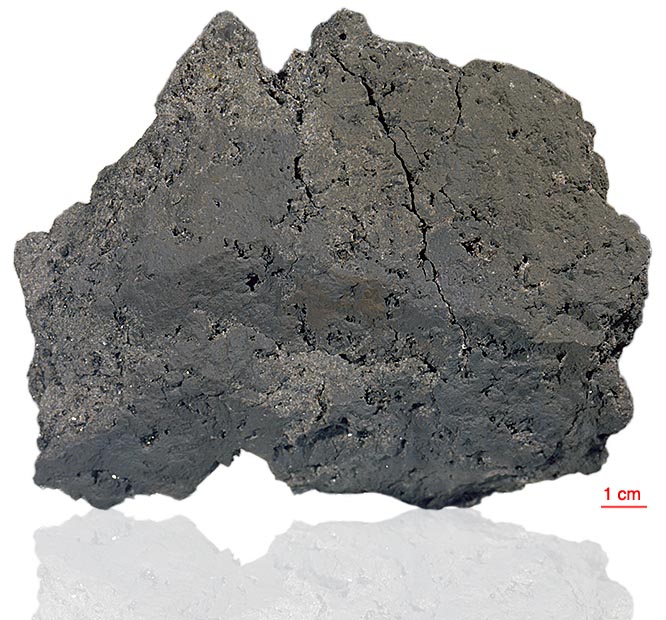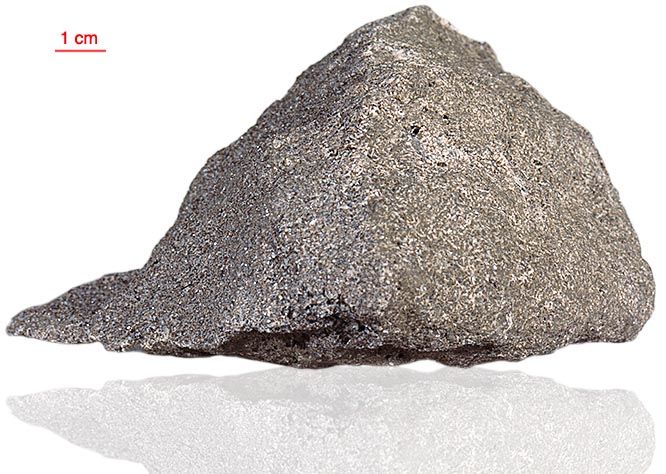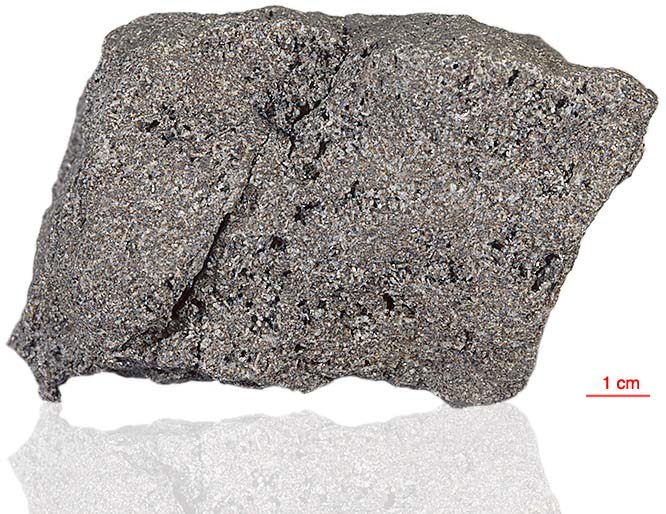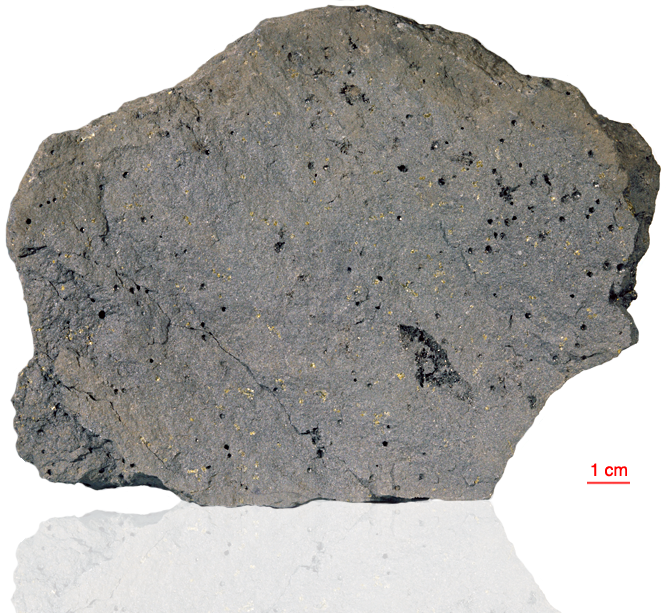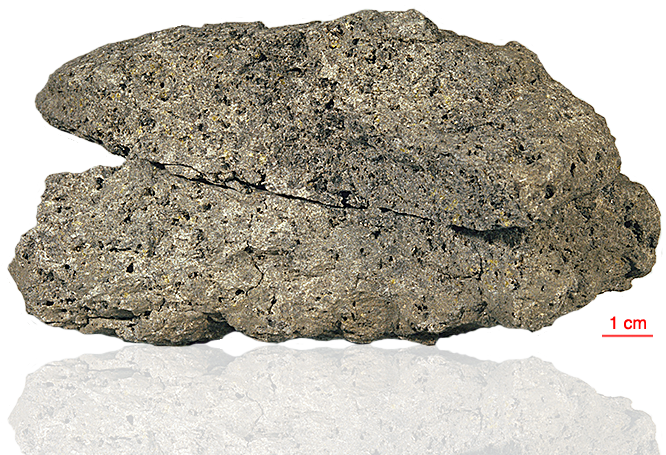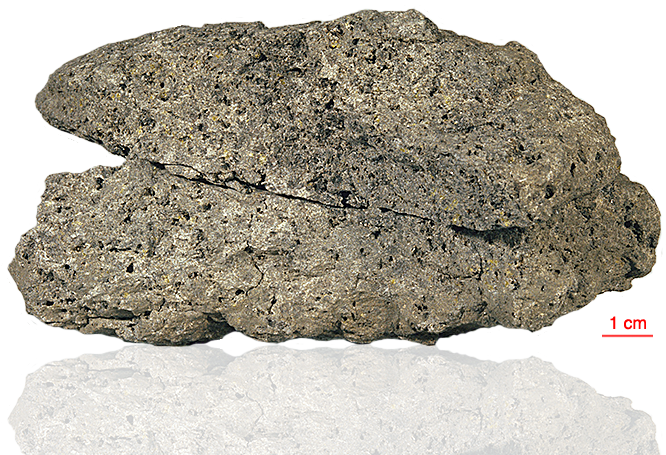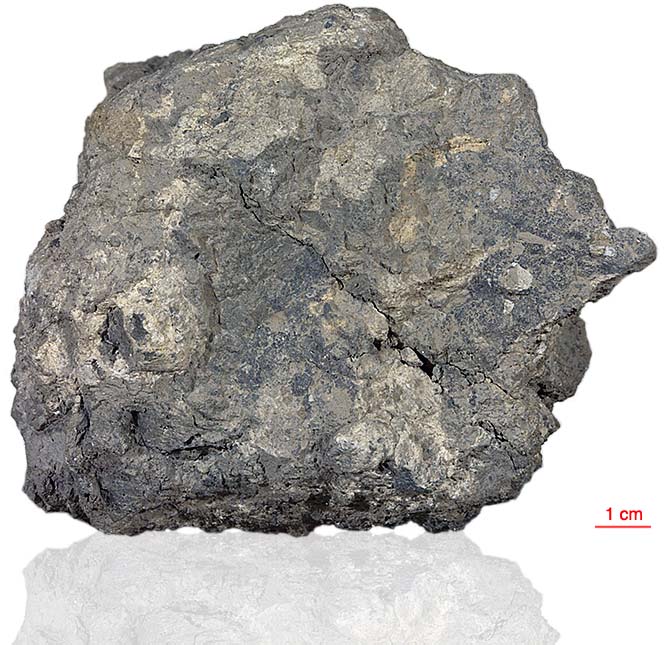
Fact sheet
73215 is a noteworthy polymict breccia in that it contains a collection of rock clasts with a range of petrologic types and ages. It is essentially a collection of rock clasts included in an aphanitic, banded matrix of mineral debris. The overall structure of 73215 is dominated by “flow banding” formed by differential flow and/or shear during and after aggregation and consolidation. Minute white lines that are traces of planes of fine-scale shear are visible in all types of matrix and schlieren derived from flattened clasts are oriented parallel to shear planes. Abundant small lithic and mineral fragments are set in a dark aphanitic groundmass with minute grain size. The grain size distribution appears seriate. Reflected light shows that the matrix has a fine wormy porosity. Rotations show some of the larger plagioclase feldspar clasts including a partially maskelynised one (rotation 2). A notable pink spinel clast appears at the top right of our thin section. Ilmenite, zircon, troilite and metallic iron are other minor constituents.
The sample weighed 1062 grams before analysis and has been dated many times with a range from 3.92 to 4.22 billion years for different clasts (Ar/Ar).
Further details of this and other Apollo samples are here: http://curator.jsc.nasa.gov/lunar/
Apollo 17, the final manned landing mission, had two objectives: to obtain samples of ancient rocks from the lunar highlands and to look for evidence of younger volcanic activity on the valley floor.
This small Collection contains material deriving from both periods, including igneous rocks around 4.3 billion years old from the lunar highlands as well as younger volcanic samples dating from about 3.6 billion years ago.
Apollo 17 was launched on 7 December 1972.

